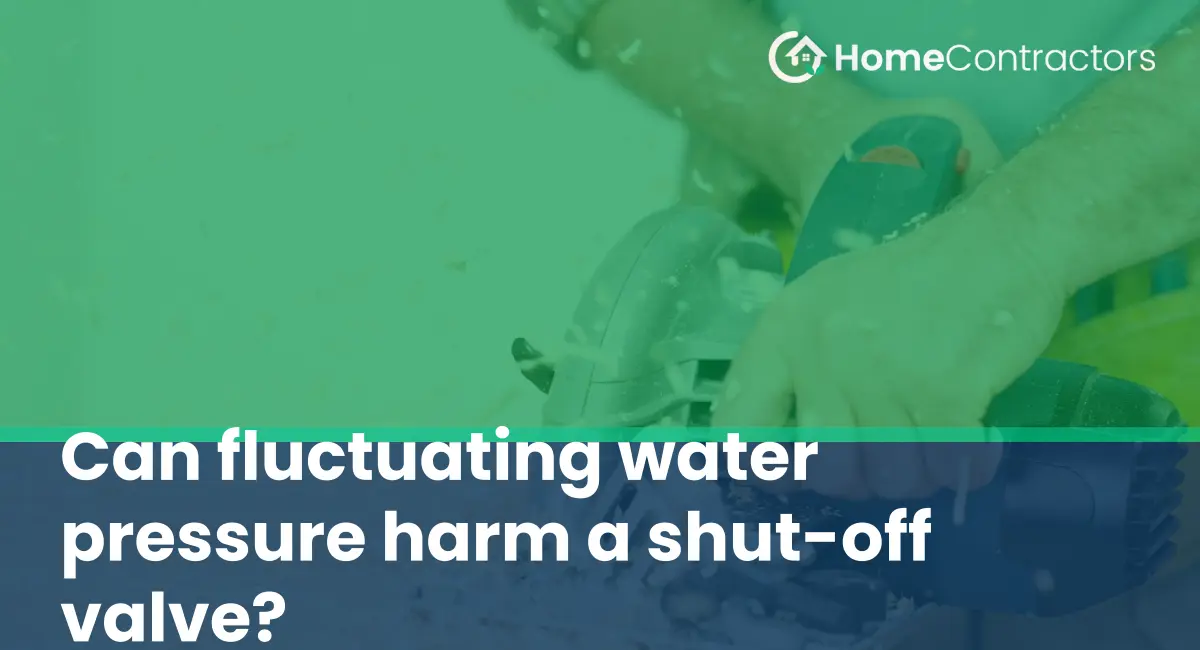Water pressure plays a crucial role in the functioning of a plumbing system. However, when the water pressure fluctuates rapidly, it can have adverse effects on the various components of the system. One component that may be vulnerable to these fluctuations is the shut-off valve. In this article, we will explore the potential harm that fluctuating water pressure can cause to a shut-off valve and discuss ways to mitigate these risks.
Understanding Water Pressure Fluctuations:
Water pressure fluctuations occur when there are sudden changes in the force or flow of water within the plumbing system. These fluctuations can be caused by a variety of factors, including high demand, water line breaks, faulty pressure regulators, or problems with the municipal water supply. While some occasional fluctuations may be common, excessive and rapid changes in water pressure can be detrimental to the shut-off valve’s functionality.
Potential Harm to Shut-Off Valves:
1. Stress on the Valve:
High water pressure places significant stress on plumbing components, including shut-off valves. When the water pressure suddenly increases, the shut-off valve may be subjected to excessive force that can potentially damage its internal mechanisms. This stress can weaken the valve over time, leading to leaks or failure of the valve itself.
2. Erosion and Sediment Build-Up:
Fluctuating water pressure can result in intense water flow, causing erosion and sediment build-up within the plumbing system. This can lead to the accumulation of debris and particles, which may find their way into the shut-off valve. The presence of sediment can obstruct the valve’s proper functioning, reducing its effectiveness or causing it to get stuck in the open or closed position.
Mitigating Risks and Maintaining Shut-Off Valve Health:
1. Pressure Regulation:
Installing a pressure regulator can help regulate and stabilize water pressure within the plumbing system. This device monitors the incoming water pressure and adjusts it to a consistent and safe level. By keeping the water pressure within an optimal range, it minimizes the risk of harm to the shut-off valve and other plumbing components.
2. Routine Maintenance:
Regular maintenance is essential for the longevity and optimal performance of shut-off valves. This includes inspecting for leaks, checking the valve’s operation, and cleaning or lubricating the valve’s moving parts. Routine maintenance helps identify problems early and allows for timely repairs or replacements, reducing the likelihood of damage caused by water pressure fluctuations.
3. Consider a Pressure Relief Valve:
Adding a pressure relief valve to the plumbing system can help protect against sudden surges in water pressure. This valve automatically releases excess pressure when it exceeds a preset limit, preventing it from reaching and damaging the shut-off valve and other plumbing fixtures.
Fluctuating water pressure can pose a risk to the functionality and health of a shut-off valve. The stress placed on the valve and the potential for erosion and sediment build-up can lead to leaks, blockages, or valve failure. However, by regulating water pressure, conducting routine maintenance, and considering the installation of a pressure relief valve, homeowners can mitigate the risks associated with fluctuating water pressure and ensure the longevity of their shut-off valves.
